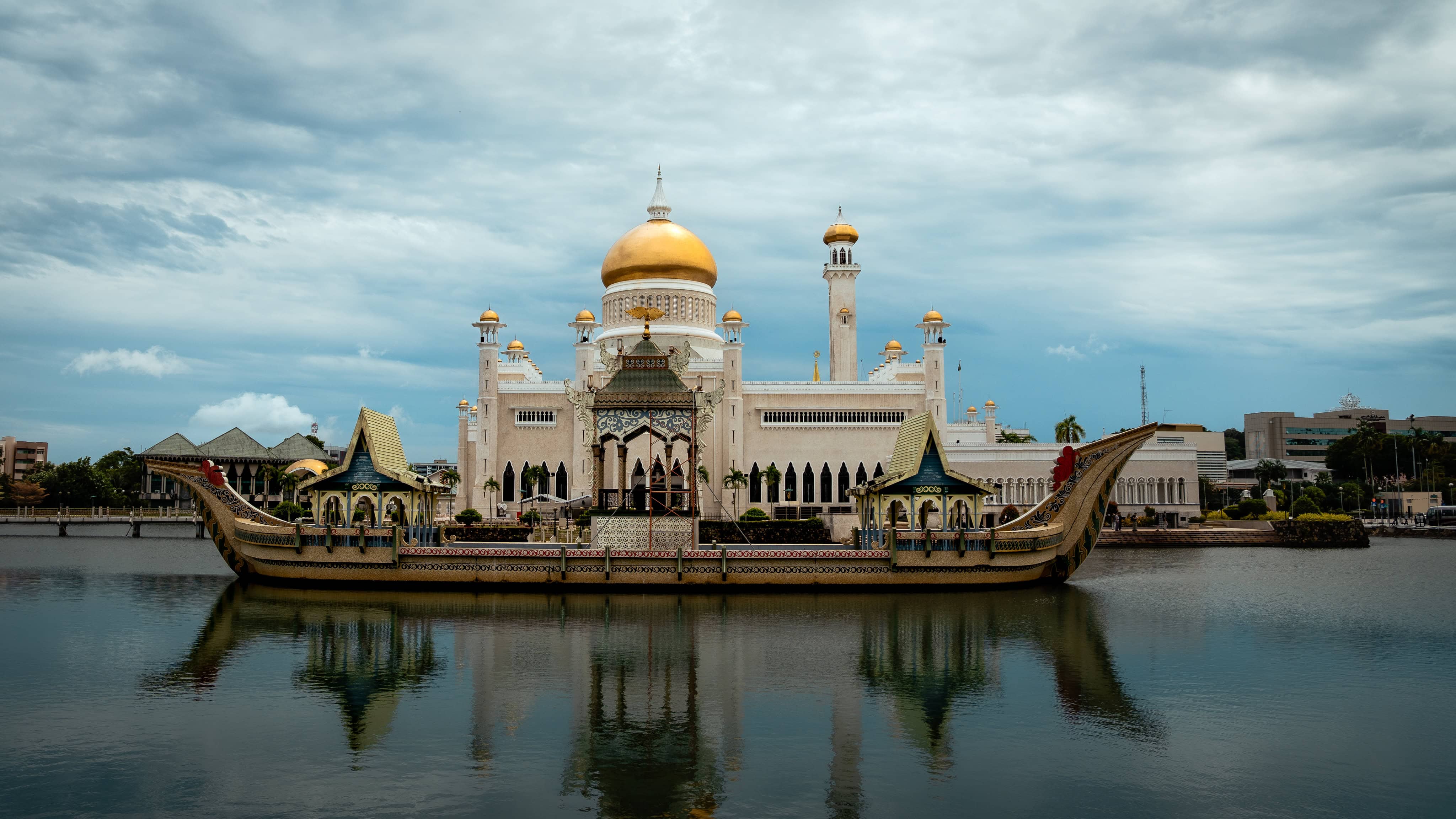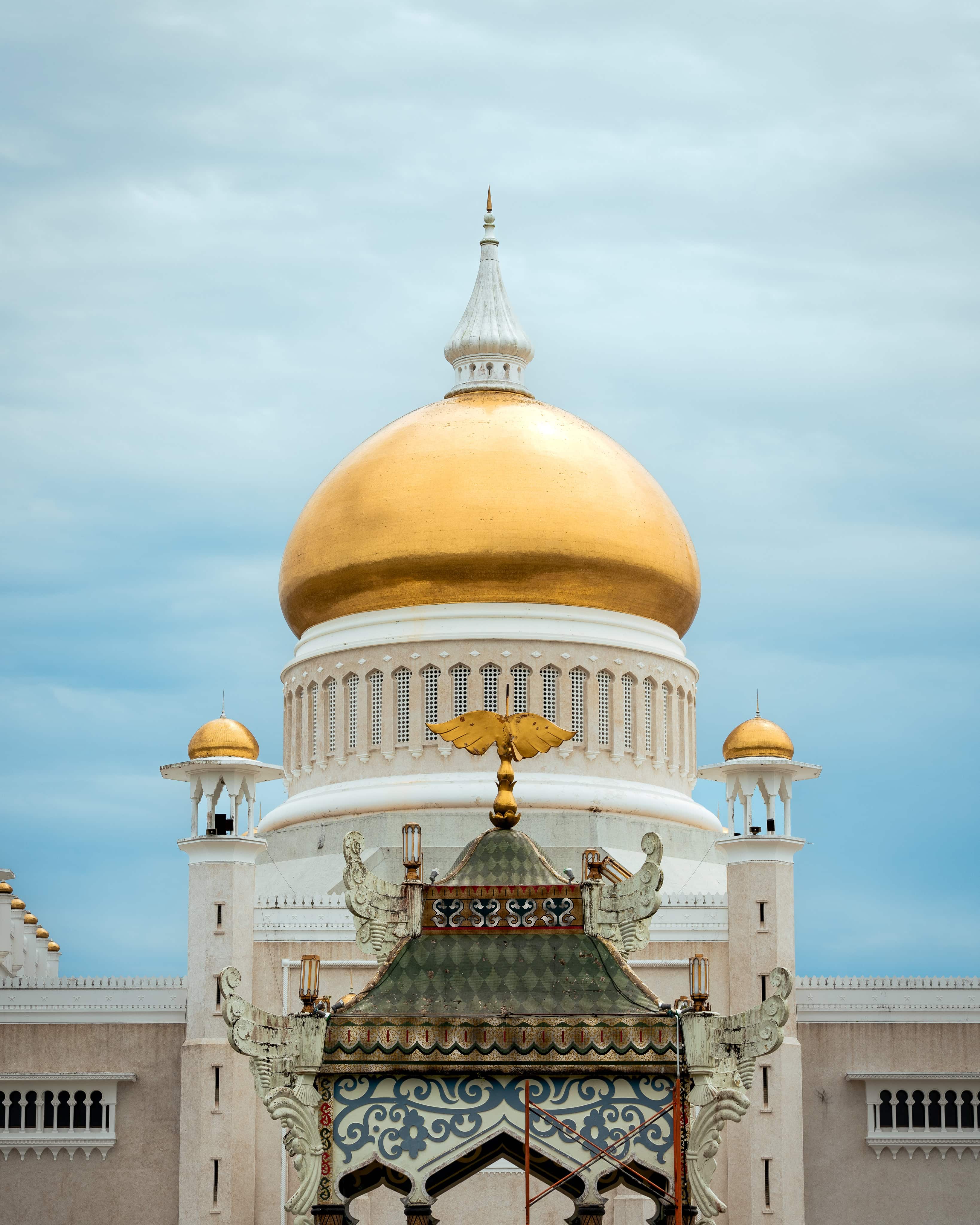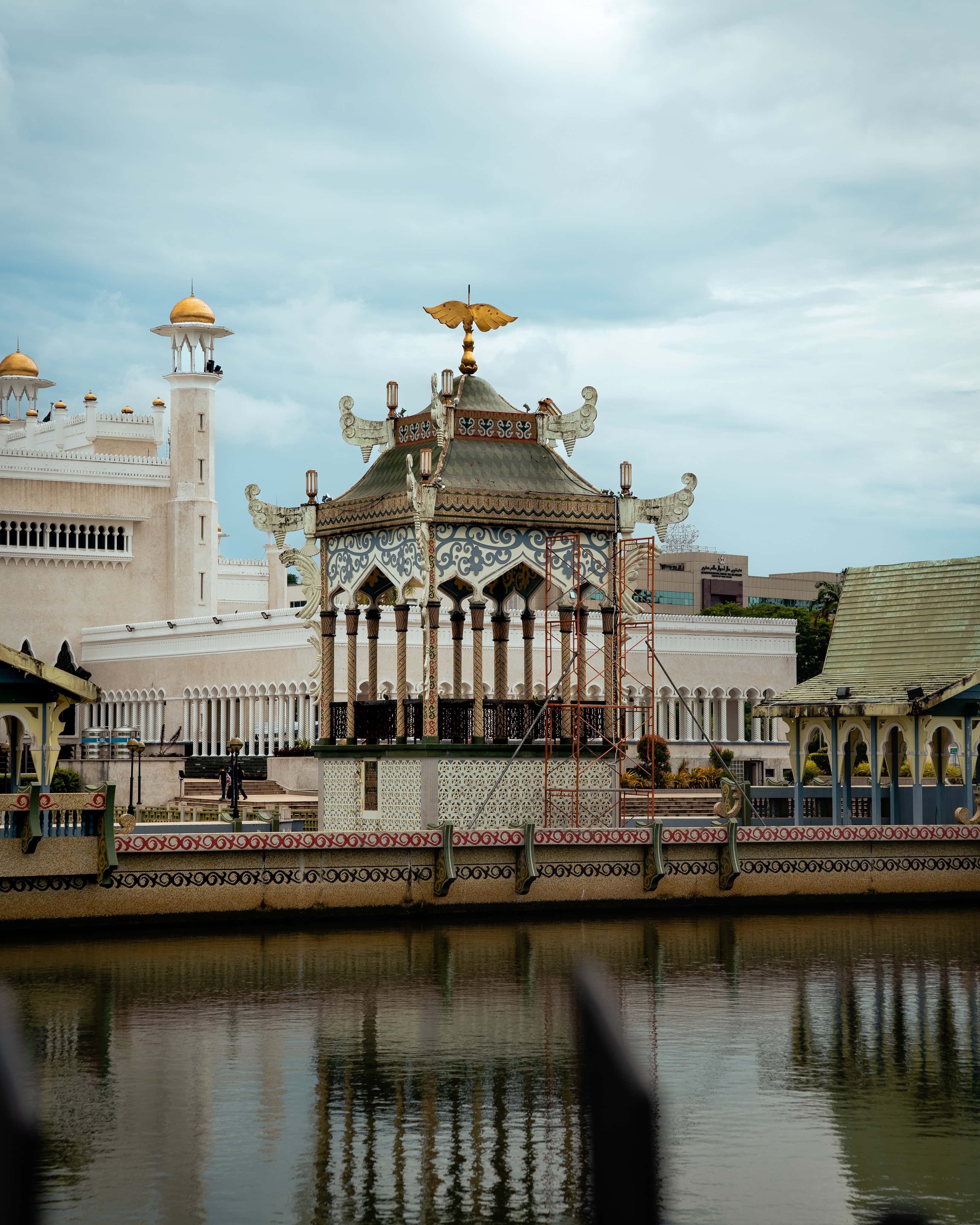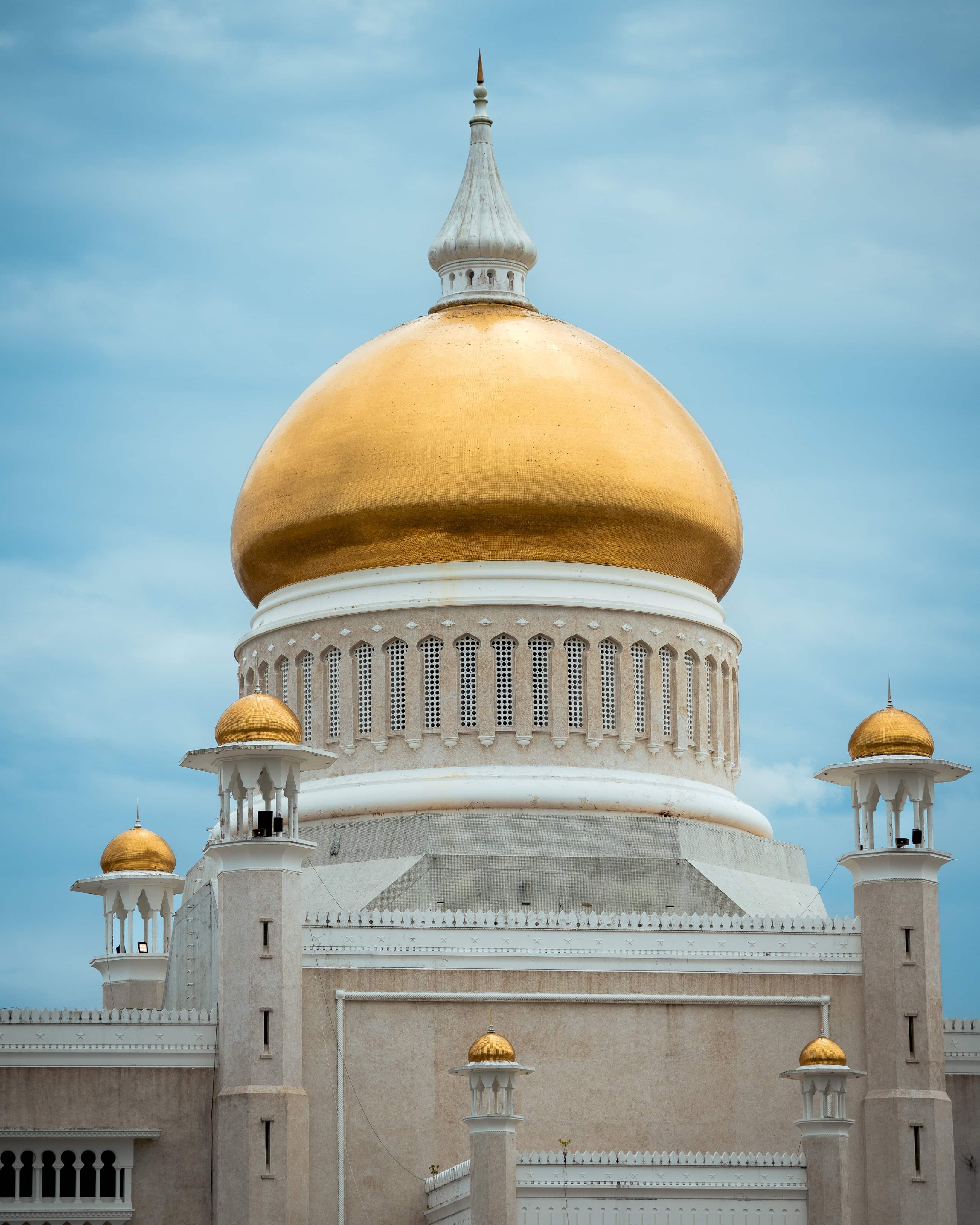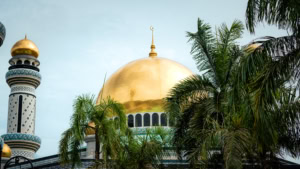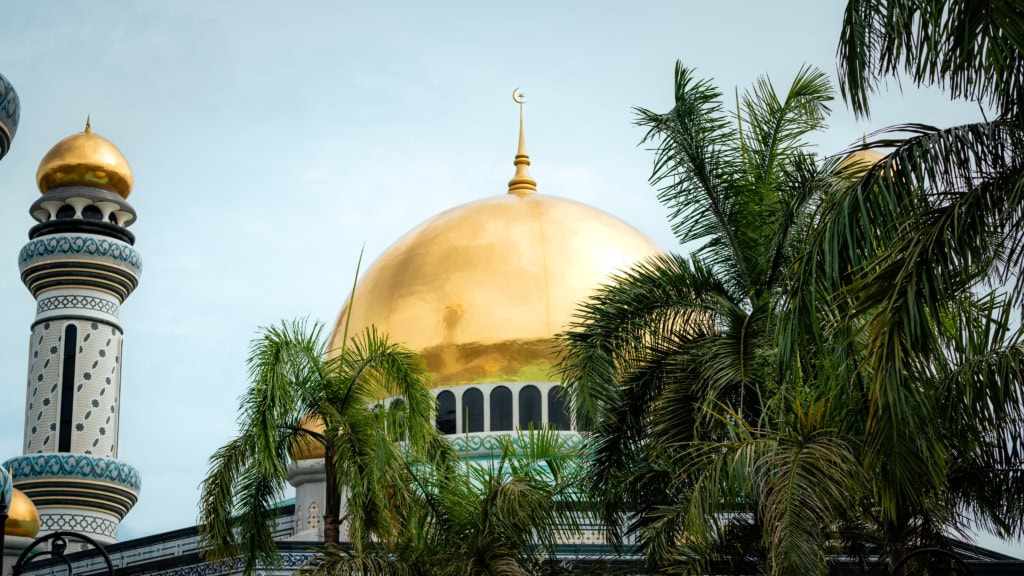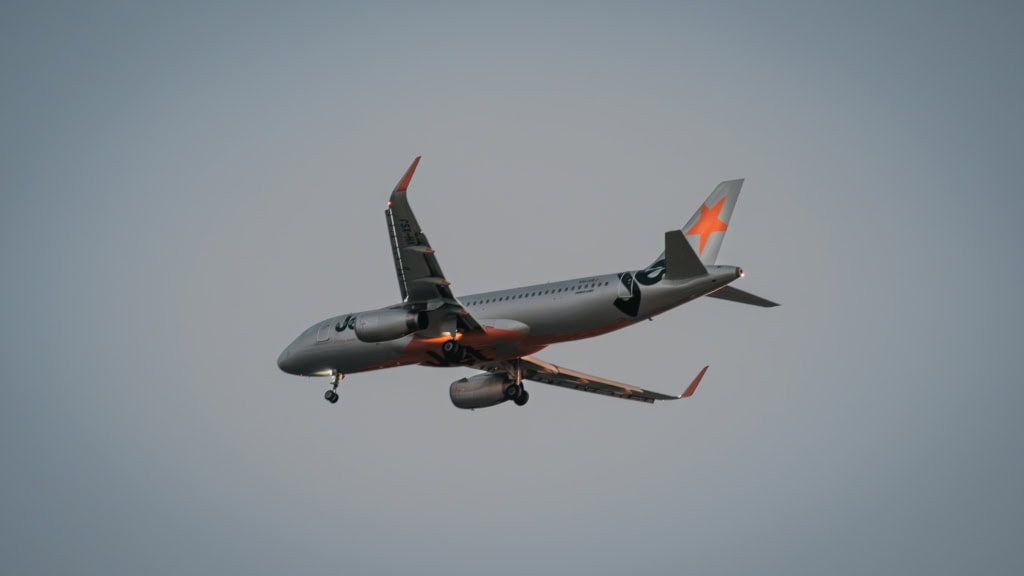The Sultan Omar Ali Saifuddin Mosque, located in the capital city of Bandar Seri Begawan, is one of the most impressive Islamic buildings in Southeast Asia. With its golden dome and white marble, not to mention its location in an artificial lagoon, the mosque is an architectural masterpiece and a religious centre.
Impressive location
Located in the heart of Bandar Seri Begawan, the mosque sits directly on the banks of the Brunei River. Surrounded by an artificial lagoon, the mosque appears to float majestically above the water. This special placement reflects its spiritual grandeur and was carefully chosen. In Islamic symbolism, water represents purity, a central virtue in the faith.
Important cultural institutions and government buildings are also in the immediate vicinity, positioning the mosque as the religious, political and social centre of Brunei. The mosque is easily accessible for visitors, whether on foot, by taxi or by water taxi across the river.
Historical context
The mosque was built during the reign of Sultan Omar Ali Saifuddien III, who reigned from 1950 to 1967. Not only was he a religious leader, he was also a visionary statesman and is considered the father of the modern Bruneian nation. His aim was to strengthen Brunei’s culture and infrastructure while preserving its Islamic identity.
Construction began in 1954 and lasted until 1958. The project cost around five million US dollars at the time — a considerable sum given that Brunei was still in the process of economic reconstruction. The mosque was a house of faith and a political statement, showing that Brunei was confidently forging its own path between tradition and modernity.
Architecture and design
The mosque’s architecture impressively combines Islamic, Malay and European elements. The design was created by the Italian architect and sculptor Cavaliere Rudolfo Nolli. The white marble of the façade comes from Italy, the granite stones from Shanghai, the crystal glass from England, and the carpets from Saudi Arabia. This international selection of materials symbolises the fusion of cultures.
The central highlight of the building is the main dome, which is made of pure gold. At 52 metres high, it can be seen far beyond the city limits. The 51-metre-high minaret has a lift that gives visitors an impressive panoramic view of the city. Inside, elegance and tranquillity reign supreme, with arabesques, fine calligraphy and sumptuous details creating an atmosphere of grandeur and devotion.

Mahligai barge: Relic of royal spirituality
Another extraordinary feature is the elaborately decorated Mahligai barge, an artificial ship anchored in the lagoon directly in front of the mosque. Built in 1967 to mark the 1400th anniversary of Islam, it symbolises the connection between religion and monarchy. Originally used for Quran recitation competitions, it testifies to the deep roots of religious practice in Bruneian society.
Not only is the barque an aesthetic eye-catcher, it also lends the entire complex an additional historical and spiritual dimension. At sunset, the golden light on the water transforms the ensemble into a surreal image.
The spiritual and cultural role of the mosque in modern-day Brunei
The mosque is not only a place of interest, but also an active centre of Islamic life. With space for over 3,000 worshippers, it is a central meeting place for the community, especially during Ramadan and Islamic holidays such as Eid al-Fitr. As well as daily prayers, the mosque hosts religious lectures, weddings and other cultural events.
For Muslims worldwide, the mosque is a symbol of a nation that has successfully combined modern development with spiritual values. Brunei officially follows the ‘Malay Islamic Monarchy System’ (MIB – Melayu Islam Beraja), and no other building embodies this principle more than the Sultan Omar Ali Saifuddin Mosque.
Visitor experience for tourists
The mosque is open to non-Muslims, too. However, certain visiting times and dress codes must be observed. Robes and head coverings are provided free of charge at the entrance. To preserve the spiritual atmosphere, photography is not permitted inside. The outside area is freely accessible and ideal for taking photos.
The best times to visit are early morning or sunset, when the golden dome is particularly impressive in the light. It is also particularly worthwhile to take a walk around the lagoon or make a short detour to the nearby Taman Mahkota Jubli Emas Park.
The Sultan Omar Ali Saifuddin Mosque is much more than just a religious building — it is a national landmark, an architectural masterpiece and a place of spiritual practice. Its ornate design, central location, and profound symbolic significance make it an unmissable destination for anyone visiting Brunei.

